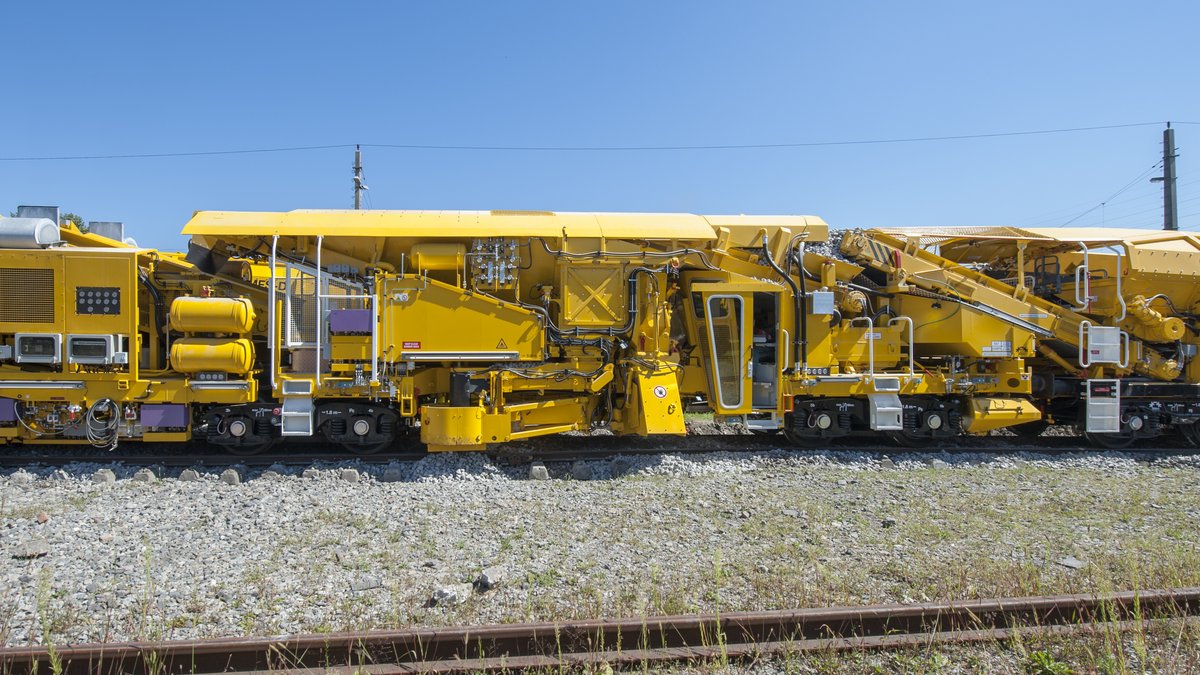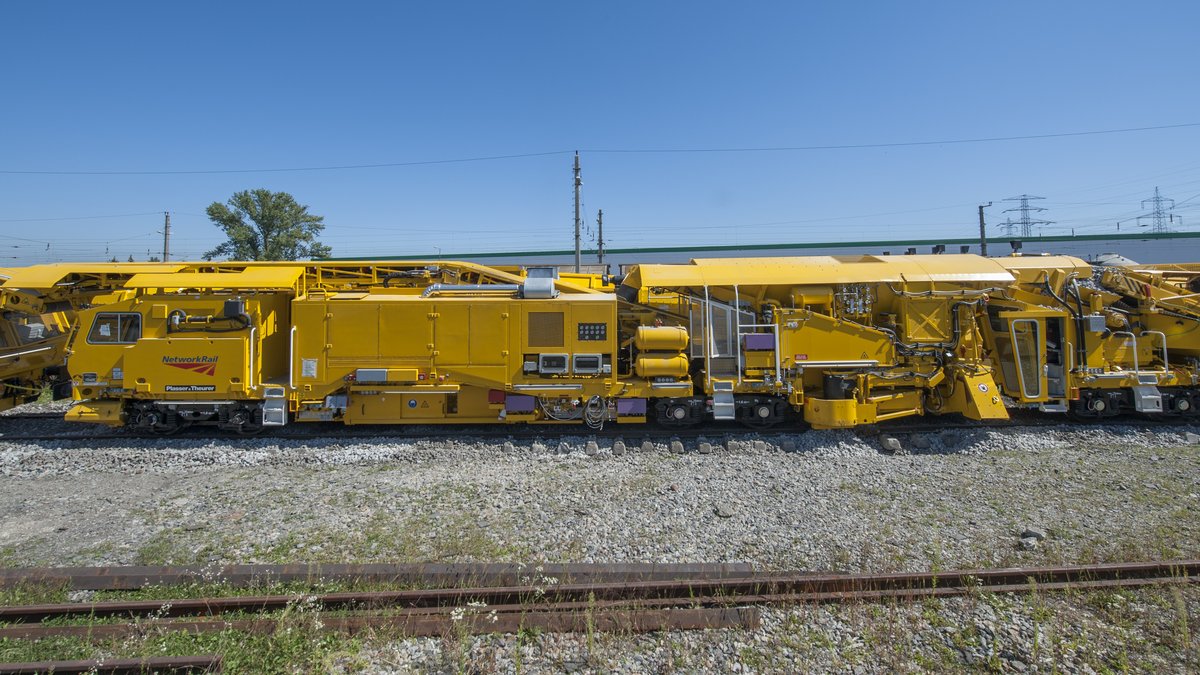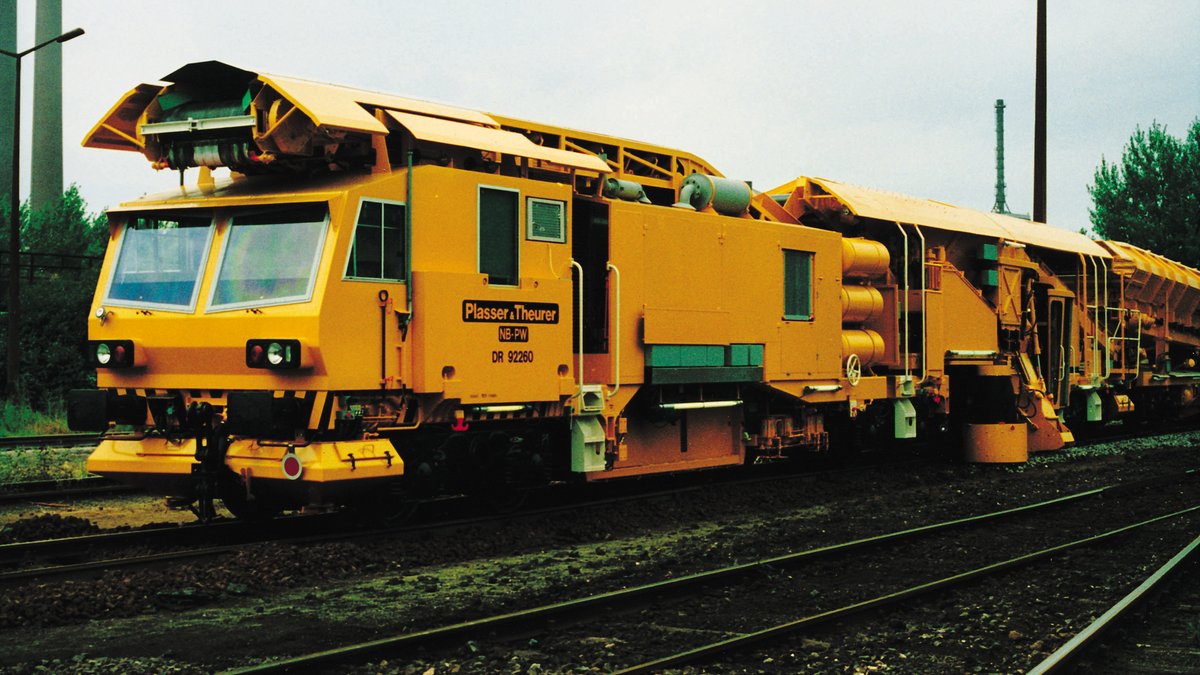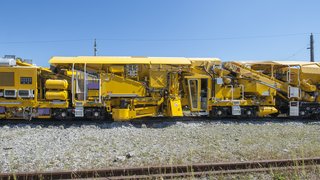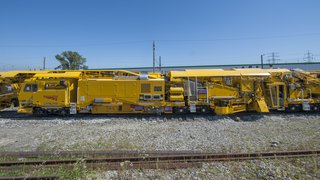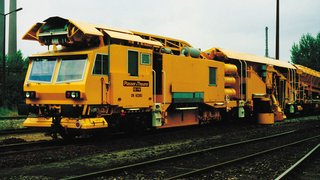The single line (new) ballast distribution system power wagon SLBDS-N-PW (later “N-PW”) is designed for hauling MFS-units forming a material handling system during working operation, for new ballast supply to the high output ballast cleaner RM 900 (-RT) or the consolidation machine 09-2X/CM and the high capacity single screen ballast cleaners type RM 95-RT and RM 90 NR as well as for distributing new ballast over the entire track skeleton.
The N-PW is a 3-bogie type vehicle designed in compliance with Railway Group Standard RGS GM/RT 2400, issue 5 and consists of powered 3-axle bogies, a machine frame with conveyor belts, an integrated hopper, ballast distribution devices, a working cabin and a large front cabin. The traction drive of the N-PW is designed for working speed in conjunction with MFS-units (approx. 2 kph with coupled MFS-units) and for moving the N-PW without haulage (approx. 20 kph).
New ballast coming from the MFS units coupled to the rear of the N-PW is transported by the receiving conveyor belt to the hopper on the N-PW and sent from there by using the hopper conveyor either to the consolidation machine or the ballast cleaner directly via the delivery conveyor belt on the front end of the N-PW or to the ballast distribution devices on the N-PW.
The delivery conveyor belt is mechanically connected to the receiving conveyor belt of the consolidation machine or the ballast cleaner, but the N-PW is not coupled to these vehicles. Both machines are linked with a control cable. An electro-mechanical traction control system on the N-PW maintains a dedicated distance range between the consolidation machine/ballast cleaner and the N-PW during work. At a pre-set maximum distance the hydrostatic traction drive of the N-PW will be activated and stopped at a minimum distance following the consolidation machine/ballast cleaning machine.
The request for feeding ballast material to the ballast cleaner comes from the ballast cleaner itself by sending a signal to the control system of the N-PW. The ballast delivery system on the N-PW controls also the ballast flow from the attached MFS units.
In addition to inserting new ballast into the track by the consolidation machine and the ballast cleaning machine the track can be ballasted also by the N-PW. Therefore, the machine is equipped with conveyor belts with integrated ballast silos on both sides. The silo, which can be adjusted in height and swivelled horizontally to its required working position, is fed with ballast from the hopper by a conveyor belt. The level of ballast within the silo is automatically controlled.
4 ballast chutes are positioned behind the silos. One over each rail and two in the centre. The chutes may also be lifted and lowered. Each chute is fitted with a ballast gate. This gate enables the flow of ballast into the chute to be controlled. The side chutes are fitted with an adjustable outlet thus allowing either a wide or a narrow shoulder of ballast to be distributed. The centre chutes are situated on guide rollers, therefore allowing the chutes to follow the correct curvature of the track. The assembly is fitted with rail detectors, which give an audible warning when not in contact with the rail.
The N-PW is controlled by 1 operator in the front cabin for supervision and 2 operators in the working cabin. In case of operation on lines with 6-foot distance, only 1 operator is required to control the chutes and the silo on the cess side.
The machine is designed to operate on 3rd rail track sections as well.
